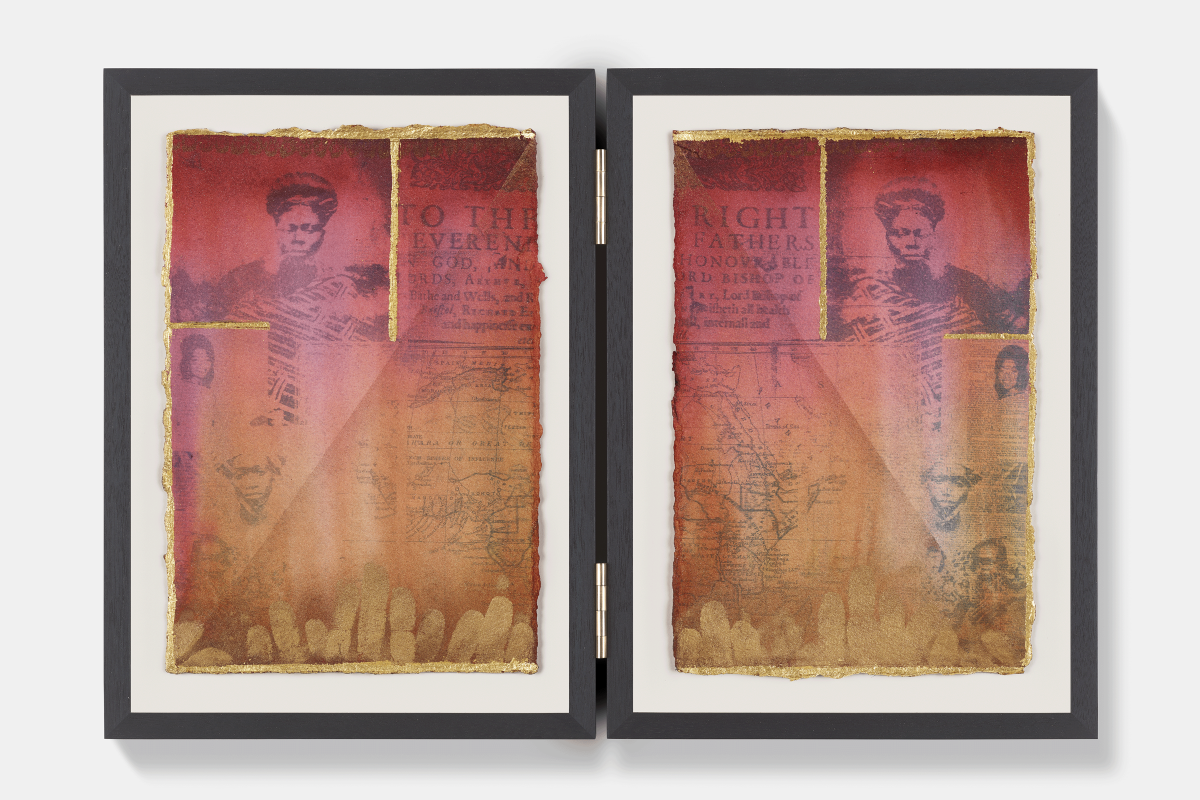
Nyɔŋma (Ten), 2023, Cyanotype, ink and gold on cotton rag paper, in two parts © Adelaide Damoah
Photo: Prudence Cuming Associates Ltd, Courtesy Gagosian
We need a global standard to protect artists’ rights
The results of a recent survey on AI and artists’ work reveal serious anxieties. Artist Adelaide Damoah calls on government to act to safeguard artists’ rights.
There is a transformative tide of AI sweeping the globe, and it will change many aspects of our lives and work forever. According to a government White Paper published in March 2023, Britain has twice the number of companies providing AI products than any other European country.
The IT and telecoms sector is leading the charge with adoption rates at 29.5%, and the creative sector is catching up. Artists increasingly are concerned about their rights with a recent survey revealing the UK’s artistic community has serious anxieties about the unchecked proliferation of AI technologies.
The results of a survey conducted by DACS (Design and Artists Copyright Society) – Artificial Intelligence and Artists' Work – published last month exposed a collective discomfort about AI's encroachment on creative rights and its potential to disrupt artists' careers.
The majority of the one thousand artists who participated (74%) expressed alarm at the prospect of their work being used to train AI models without their consent or adequate financial compensation. These concerns strike a chord with larger concepts surrounding the convergence of technology, copyright and the ethical use of artistic works.
Nuanced understanding among artists
In recent months, a group of artists instigated copyright lawsuits against AI companies including Midjourney, Runway AI and Stability AI, in a US court of law.
The stark findings from DACS underscore the urgency of the matter for UK artists too: 95% insist on being consulted before their work is used for training AI models, 94% assert entitlement to financial compensation for such usage, and 89% advocate for governmental intervention in the form of safeguards and regulations.
The survey also demonstrates a nuanced understanding among artists of AI's potential benefits and drawbacks. While acknowledging the potential of AI to democratise creativity and reduce operational costs, artists reject unauthorised exploitation of their work.
Beyond individual rights, there are societal implications too including misinformation, ethical dilemmas surrounding deep fakes, and the opaque nature of AI models. These concerns have sparked a growing demand for transparency in the training and utilisation of AI models, as well as for regulations that align with existing frameworks of copyright law.
Government’s role is crucial
The fear of obsolescence in the face of AI-generated content is palpable, as is the concern for the future of diversity and access in the creative sector. Yet, perhaps the more important question is what value are we placing on human creativity.
The government's approach to fostering AI innovation must be tempered with the urgent need to safeguard the creative sector. Choices made now will have far-reaching consequences. And artists must be included in discussions, so their voices are heard, and their rights are respected and upheld.
Safeguarding artists’ interests in this AI age requires a collective effort to establish robust regulations, promote fair compensation and provide education and training in this fast-evolving environment. By doing so, the UK could set an example of harmonising technological progress with the preservation of artistic integrity and livelihoods.
The government's role in this is crucial. Ensuring a future where AI contributes positively to society, without undermining the creative sector, is a task that demands careful but immediate attention and action. It's about fostering an environment where innovation coexists with the respect and protection of artists' rights, ensuring the creative sector remains vibrant and sustainable.
Adelaide Damoah is a multi-disciplinary artist.
![]() @AdelaideDamoah
@AdelaideDamoah
Join the Discussion
You must be logged in to post a comment.